TV Insider - The industry wants you to go 4K, but the professionals won't be joining you
I certainly won't be buying a 4K TV...yet
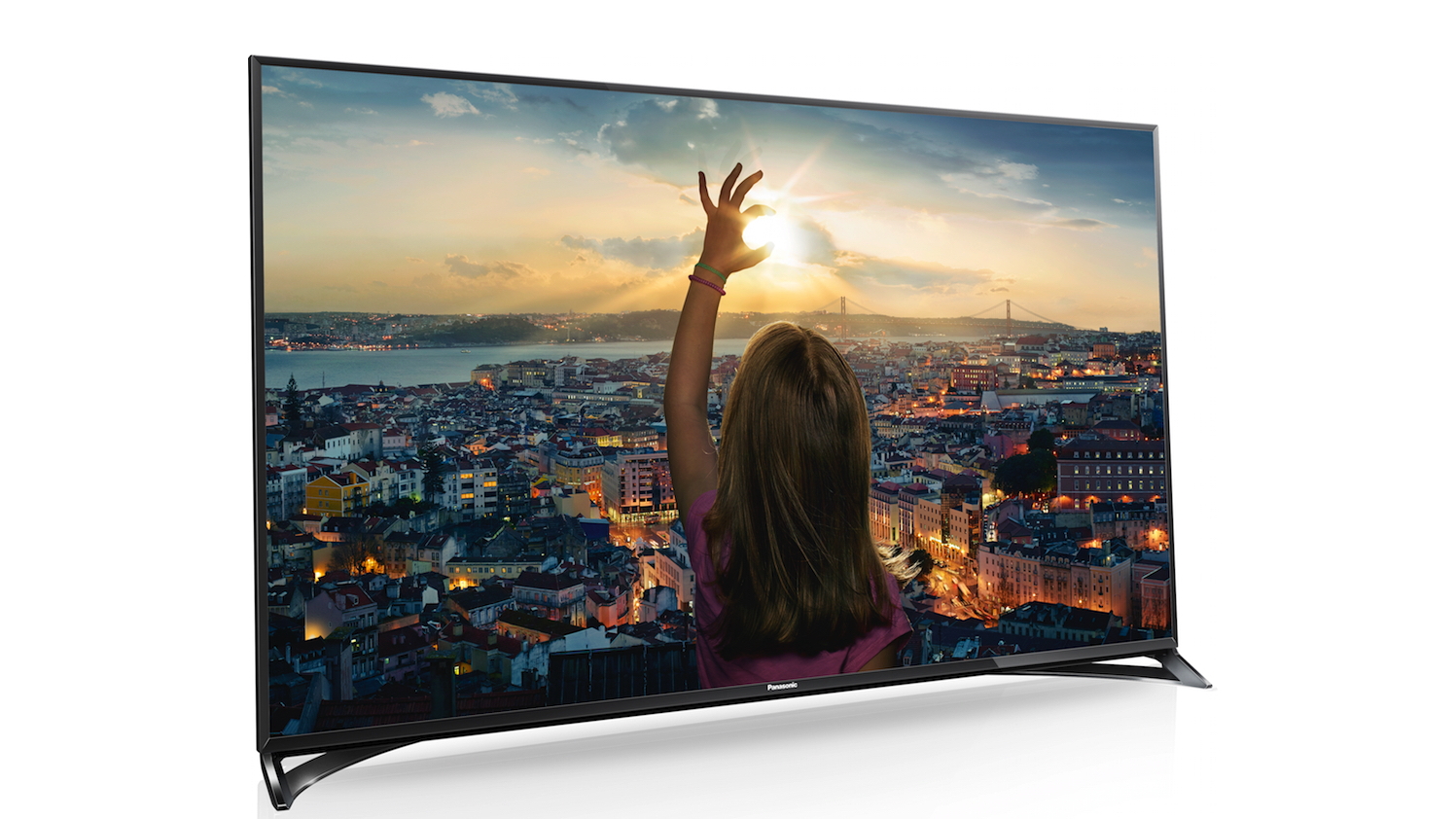
I'm a film/broadcast producer with some 25 years experience covering most aspects of the broadcast game including recently having produced some of the earliest 4K live broadcast content.
As an early proponent of the new super-resolution, why then am I not currently in the market for a shiny new 4K TV? And, almost more importantly, why are most of my industry colleagues not ready to make the jump up from Full HD quite yet?
Quite simply 4K, or Ultra HD, isn't ready yet. It's close but alas there's still no cigar - yet. That word 'yet' is critical. Please allow me to explain.
In the world of content creation, bigger is rarely better. Quality is what it's all about. In these days of fast paced tech developments, the old saying 'content is king' couldn't be more relevant. Technology comes and goes. The thing that people will always remember is the content, whether it was presented as theatrical, broadcast TV, tablet or whatever.
So it's in the interest of the content creator to ensure that their story, event or show leaves an impression. Forgetting for the moment about 'throw away' soaps and the like, the blockbuster movie, the Champions League final, even a Saturday night live-spectacular must create an impact.
"People will forget what you said, people will forget what you did, but people will never forget how you made them feel," so said Maya Angelou.
So, let's assume we have quality content to present which ought leave our desired impression, and let's say it's to be delivered to the home, how do we employ the latest technology to best effect? Do we hope for a bigger screen, with more pixels? Or more colours, greater contrast, smoother frame rates? Or do we aim for a mixture of all above?
Get daily insight, inspiration and deals in your inbox
Sign up for breaking news, reviews, opinion, top tech deals, and more.
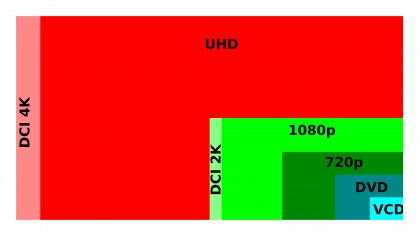
Let's talk about pixels
This is a fairly common image used to represent the difference in the growing number of pixels in a panel. It's interesting but strangely misleading.
Why? Well, think about where most mobile devices sit within this schematic. The iPad Air's Retina display, at 2048 x 1536, sits happily occupying a space larger than HDTV.
Now take a look at the display characteristics across a selection of Apple devices from iosres.com.
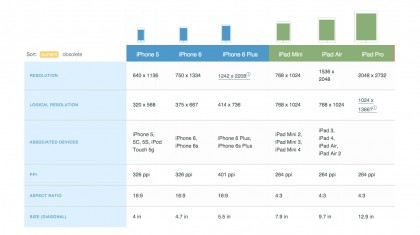
The key line in this image, is the one that details the PPI, or pixels per inch.
Now, just to throw you a little off-balance, allow me to switch things up and introduce you to the Human Visual System (HVS). This image is an fMRI snapshot of neural synapses in action.

Green illustrates the synapse activity (connections) at work in the motor cortex, red represents data passing between the two hemispheres of the brain and blue represents the visual activity and processing when viewing an image designed to invoke a mild emotional response.
It's estimated that around 75% of our total perception is derived from the HVS. In fact between 30-40% of our cerebral cortex's surface area is occupied processing our visual senses alone.
The brain then is processing more than just the mechanical visual stimuli when we see something; ultimately invoking cognitive responses such as, in this case, emotion.
In terms of the perceived resolution by the HVS, such mechanical stimuli may include sharpness, contrast, colour and motion. And in terms of the video we see that correlates directly to resolution, dynamic range, colour gamut and frame rates. Perceived resolution is not just about the number of pixels.
In fact there is arguably a finite pixel density that's worth aiming for.
So it's back to that old resolution chart. Assuming all pixels were the same physical size then this diagram would be a good visual representation. But they are not. I mentioned the iPad resolution and where it should be placed in this scheme and although it is just an illustration, it does imply that when it comes to screen size, then bigger is better.
Retina
So, what about including screen size and viewing distance into the equation?
"It turns out there's a magic number right around 300 pixels per inch," said a certain Steve Jobs, "that, when you hold something around to 10 to 12 inches away from your eyes, is the limit of the human retina to differentiate the pixels."
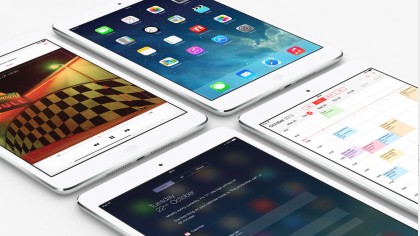
Essentially then, given a large enough viewing distance, all displays eventually become Retina. Made in the context of the launch of the Apple Retina displays, Jobs articulated the single most pertinent point with regards this discussion.
Having said that, there is some debate as to the "true" pixel or dot density that the eye can capture. Some argue that the pixel density should be greater: measured in arc minutes the theoretical pixel density could be double that of Apple's Retina specification. The argument against this however, would be that in order to perceive such detail the eye would need to be so close to the screen the experience would be uncomfortable.
Personally, I can't see any pixelation on the iPad screen.
The print industry uses 150dpi for mainstream titles and 300dpi for exceptional or commercial printing. 300 dots or pixels per inch is not a new discovery. But the truth of the matter is that, while HD resolution represents a genuine improvement, many consumers are not that concerned about watching HD over SD if (and they normally are) watching on a relatively small screen.
Viewing distance
This is partly because of the way we configure our living space. Most people arrange their living rooms such that the TV, or communal screen, is placed around 2m /6ft or further from their viewing position. At such distances size of screen and the viewing distance start to be the determining factors as to whether there is a benefit to viewing more pixels.
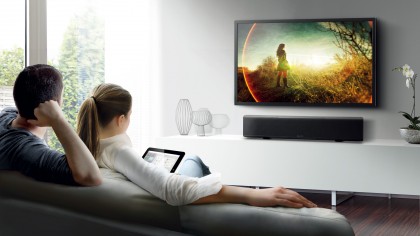
In 2013 the average UK screen size in the UK was 36.8 inches (diagonal). At this time Sharp was predicting that by 2015 the average screen size would be 60". Here we are in 2015 and the latest BARB research suggests that the majority of UK homes own a main screen in the 35-50" range. Only some 3% of homes have a 51"+ size screen.
These screens are mostly limited to presenting SD and HD content. So, being generous, let us consider 4K benefits from a screen at 60-inches or greater.
For a 60-inch screen displaying 3840 x 2160 pixels at a pixel density of 43ppi, the screen effectively becomes 'Retina' at around 47-inches or 119cm from the screen. This is roughly the optimum viewing distance. In practical terms any viewing distance beyond 130cm or so will result in a completely non-pixelated image.
Further away and the benefits of Ultra HD decrease fast.
Now consider a 60-inch screen displaying HD at 1920 x 1080 pixels, 36ppi. This time the screen becomes 'Retina' at a viewing distance over 94-inches or 239cm from the screen. This is more akin to an average living environment.
So if mere HD becomes 'Retina' in a normal viewing environment, why change up our televisions?
Even if consumers are happy to buy 4K TV sets 60-inch and above - these are the sets more likely to deliver a good 4K experience - there's still a vast amount of SD content out there.
Have you seen what SD looks like close up on a 60-inch 4K TV? It's not pretty.
There are many other production factors to be considered. Theoretical resolving quality of 35mm film (for re-mastering purposes), image aspect ratios, camera sensors, production workflows to name a few. But for now, there is one other important issue to touch on.
Bandwidth
Bandwidth is a major factor in determining the experience we 'enjoy'.
Just as dynamic range, colour gamut and frame rates require independent analysis, so does compression, delivery and therefore bandwidth. For the moment, I ask how many of us can reliably guarantee a connection to the home that will render 4K content worthwhile?
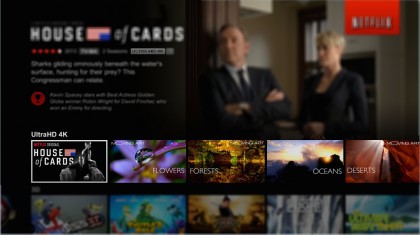
Netflix is recommending a solid 25Mbps download for its 4K UHD service.
I then ask the broadcasters to come forward and be open about their policies regarding how much content they aim to squeeze in 'normal size consumer pipes'.
Are we as content creators in danger of having our work compressed to oblivion for the sake of multiple channel offerings or low bandwidth but wide consumer distribution?
Note to broadcasters and set-manufacturers; the only people who will suffer are the consumers.
Why then bother with 4K when 'enhanced HD' (ie. high dynamic range at 1080p) is so much more beautiful and, because of its lower bandwidth demands, more practical?
At the recent IBC industry gathering I attended in Amsterdam, industry professionals were wowed by standard HD content displayed on a professional HDR monitor. And markedly less wowed by the mass of 4K standard dynamic range content on offer.
That's a picture with a quarter of the pixels outshining a full Ultra HD video. In front of a knowledgeable, professional crowd.
It is even rumoured that some broadcasters who have already set their stall all out in 4K were 'intellectually impressed' by the impact HDR left in comparison to just more pixels.
I have to concur with this from my own experience of analysing my own content.
So, what's to be done?
The industry needs to take a full and responsible view on the roll-out of 4K.
We are primed and ready to fire the starting pistol, way before the race preparations have been finalised. False starts may only serve to irritate the consumer and crucify the roll-out of something which could genuinely be a paradigm shift in TV displays, just for the sake of short-term sales.
But it seems inevitable the roll-out will be staged.
For me, the priorities though have been skewed. Ultra HD makes for a simple marketing message off the back of bigger numbers being better, but in reality it doesn't necessarily make for a great product.
Bring into the equation high dynamic range though and there will be an immediate impact that will wow the consumer.
Add to that a wider colour gamut and ensure that the frame rates do actually hit the 50/60+fps mark (for suitable content, i.e. not re-mastered film) then we will have a compelling story to sell - importantly even at HD pixel resolution.
It's the quality of the pixel then, not the number of pixels, which is going to create the consumer pull, so don't get too excited about TVs which are purely offering the bare minimum right now.

William Scanlon is an experienced broadcasting professional with a background stretching back over 25 years in the industry. He is a regular panelist at industry events discussing topics such as 3D, CGI and visual effects as well as new technologies like Ultra HD.
He was also the executive producer on the first live Ultra HD international broadcast of a major sporting event.